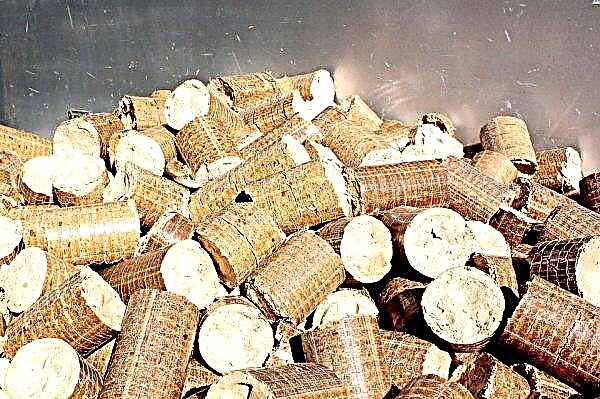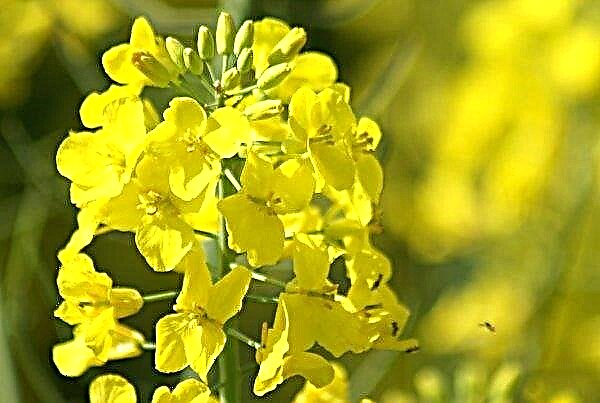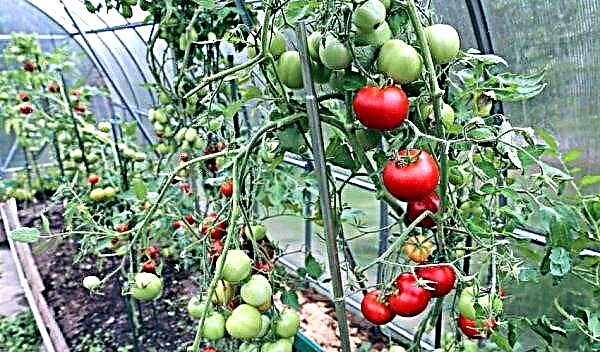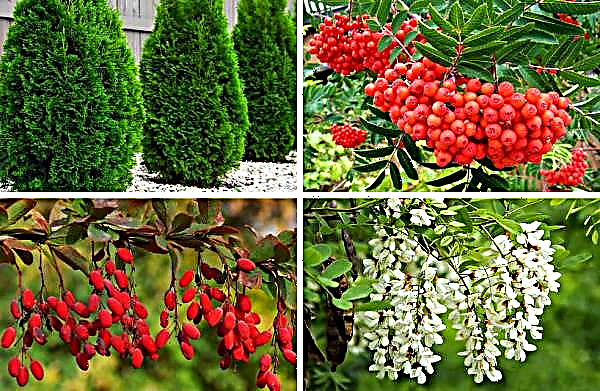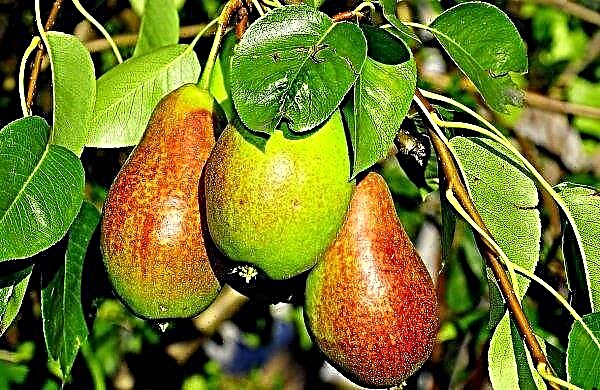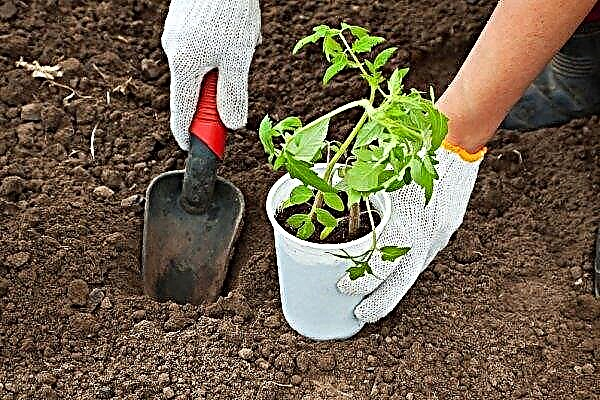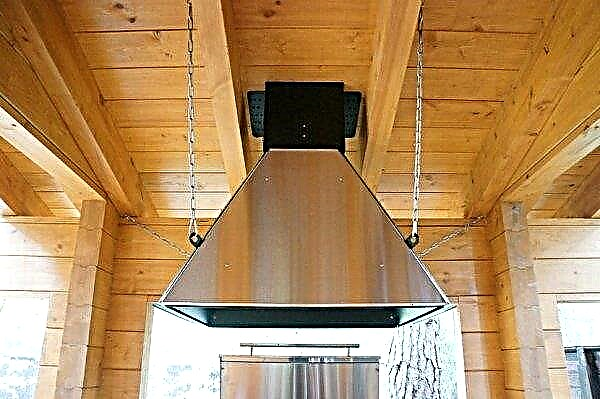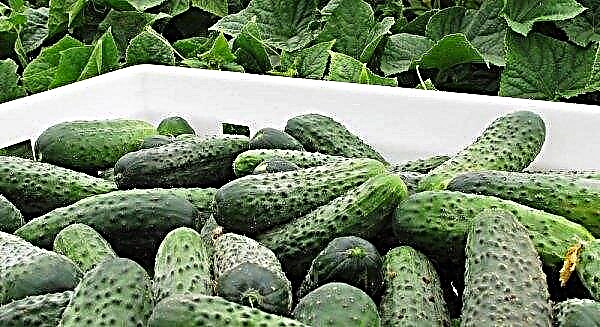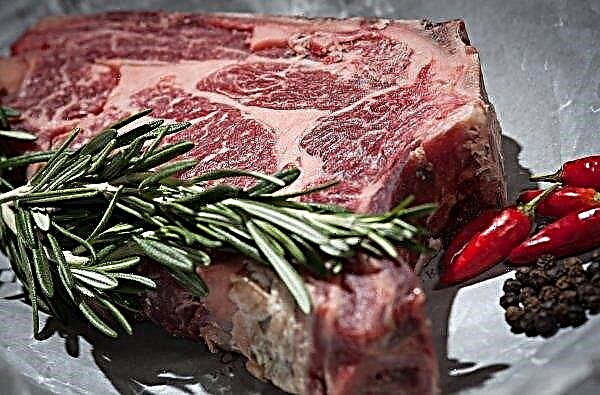Gladiolus is rightfully considered one of the most beautiful ornamental plants. He is one of the five cultures that are most often used for cutting. About the flowering of this plant, the ability to speed up or slow down this process, read the article.
Do gladioli bloom in the first year?
Today, gladioli, or fenders, are planted for two purposes:
- decorate a beautifully flowering plants plot;
- use cut flowers for sale.
In any case, abundant and prolonged flowering is expected from this crop. To achieve it, it is important to plant the plants correctly, observing the recommended terms, site requirements and planting depth.
Did you know? The name gladiolus was given by the Latin word gladius, which means "sword" in translation. The flower got such a name because of the shape of the leaves, which look like swords.
A place for skewers must be chosen open to the sun's rays, but sheltered from the winds. The land on the site should be fertilized with humus (1 bucket per 1 m² of area) or with mineral fertilizers: ammonium nitrate (15 g / 1 m²), superphosphate (15 g / 1 m²), potassium sulfate (30 g / 1 m²).

If required, it needs to be improved: add lime to acidic soil, sand to humus or peat, to loamy and clayey sand and peat. In wetlands, bulk beds should be organized. The recommended width of the beds for the described crop is 1–1.3 m, length is 10 m. If possible, they should be oriented in the direction from east to west.
The holes should be dug taking into account the size of the bulbs - they should be four diameters of planting material. When planting, it is important to observe the recommended depth: large specimens deepen by 10-15 cm, small ones by 8-10 cm. Too deep a recess can lead to a later appearance of peduncles and the formation of fewer children. Shallow planting material is prone to frequent diseases.

The best flowering is observed in plants grown from bulbs that have been previously germinated. They need to be placed in a warm and dark place. 2 days before the bulbs are placed in the ground, it is necessary to put the bulbs on a damp cloth so that they have roots before planting.
Then you should remove the scales from them. This will speed up the germination process. If you follow the above recommendations, the gladiolus will bloom in the first year after planting.

Flowering should be encouraged by dressing. They will need 6 per season:
- During the formation of the first sheets, nitrogen and potassium mixtures are added.
- After the formation of 3-4 leaves, plants should be fed with nitrogen and potassium in combination with boric acid.
- When the sixth leaf appears, you need to dig the site with the simultaneous application of nitrogen and potassium fertilizers.
- Repeat the previous dressing during the production of the peduncle.
- After flowering, the plant needs phosphorus and potassium.
- In autumn, it is advisable to water the plot with a solution of potassium permanganate.
To achieve regular flowering, the place of growing gladioli must be changed every 3-5 years.
Did you know? 300 years ago, gladiolus bulbs were used exclusively for the preparation of therapeutic agents and cakes. As an ornamental plant, it began to be grown only in the 19th century.
Gladiolus season
The plants described produce buds depending on which variety they represent.
According to the timing of flowering, they are divided into:
| Early (Nola, Glens Blue) | bloom 72 days after planting |
| Mid early (Frosty White, White Dove, Heritage, Fortune, Blackstone, Grand Slam) | 77 days |
| Medium (King of the Hill, Millennium, Perfection, Silent Snow, Super High Brau) | 83 days |
| Mid-late (Dreams End, Openline, Sailors Delight) | 88 days |
| Later (Grand Opening) | 95 days |
 If you choose the wrong place for the cultivation of gladioli and plant them in the shade or partial shade, this can provoke a complete absence of flowering. Most often, with errors during planting, late varieties refuse to bloom.
If you choose the wrong place for the cultivation of gladioli and plant them in the shade or partial shade, this can provoke a complete absence of flowering. Most often, with errors during planting, late varieties refuse to bloom.
When do they bloom after planting?
In addition to belonging to the variety, other factors affect the timing of flowering, namely:
- the time when gladiolus bulbs were planted;
- climate in the area where the flowers grow;
- weather conditions observed in the year of planting;
- age of planted bulbs.
The very first buds open in early July. Fading of the latest - occurs in October. If we talk about the age of planted bulbs, then those who turned one year old bloom. Approximately 2 weeks later, biennial tubers produce buds.
When planting skewers, the climatic and weather conditions in the region should be taken into account. Landing can be started if the earth at a depth of 10-12 cm has a temperature not lower than + 8 ... + 10 ° С.
How long they bloom
Gladioli are not plants that are capable of releasing buds several times per season. They do this only once a year. Answering the question, how long can the skewers bloom, then on average - 1.5–2 weeks. In rainy and cool years, the flowering period can be reduced to a week.
Blooming gladioli and cold
Skewers will not bloom in cold temperatures, therefore they should be planted only when the temperature is warm and the ground warms up.  Otherwise, the bulbs will freeze, they may die, give weak sprouts that will grow and develop poorly. Such plants will not form buds. Also, do not plant gladioli too late.. In such plants, flowering may not occur.
Otherwise, the bulbs will freeze, they may die, give weak sprouts that will grow and develop poorly. Such plants will not form buds. Also, do not plant gladioli too late.. In such plants, flowering may not occur.
The recommended landing dates for different regions of Russia can be found in the table:
| Region | Landing time |
| Moscow and Moscow region | April 25 - May 10 |
| Ural and Siberia | second decade of May |
| Southern areas | since the beginning of April |
How to speed up flowering
You can achieve the earliest flowering if, in March, plant early-flowering bulbs in pots and grow them indoors, and at the end of March transfer them to open ground under a film.
Video: planting gladioli in a pot
Another way to get the buds faster is to place the bulbs in a solution containing such components before placing them in the ground:
- potassium permanganate (2 g);
- boric acid (3 g);
- copper sulfate (3 g);
- cobalt nitrate (1 g);
- magnesium sulfate (2.5 g);
- zinc sulfate (0.7 g).
 Plants that receive such nutrition bloom 14 days earlier. You can achieve the production of peduncles in the early stages if you adhere to the lunar calendar.
Plants that receive such nutrition bloom 14 days earlier. You can achieve the production of peduncles in the early stages if you adhere to the lunar calendar.
So, in 2019, the following months are considered favorable months and days for planting a gladiolus:
| Landing month | Auspicious days |
| April | 6–8, 20–26, 29, 30 |
| May | 6–8, 14–17, 21–23, 31 |
| June | 1, 2, 9–11 |
Important! You should not engage in planting work on April 5.19, May 5, 19, June 3, 4, 17.
How to delay or prolong the flowering of gladioli
There are four ways to extend the flowering period:
- Combine in the flowerbed varieties of gladioli with different ripening dates. Thus, when early flowering plants bloom, varietal specimens with an average flowering period will be released. After their inflorescences dry, the period will come to delight the eye with the bright flowers of late gladioli.
- Put the bulbs in the flowerbed gradually at different times, for example, with an interval of 2 weeks. Thus, it is possible to achieve that the flower garden will be dotted with bright flowers from early summer to mid-autumn, before the onset of cold weather.
- Plant bulbs of different ages in the flower garden. Thus, they will bloom at different times, and the buds will remain in the flowerbed for a long period.
- Plant on a single plot plants with different bud sizes. Crops with large flowers will bloom later, with small ones earlier.
 To make gladioli look good longer, feed them. It is recommended to add flower dressing or half a tablet of ground aspirin to the water in the vase so that the flowers receive additional nutrients. In addition, change the water every 2-3 days and break off withered flowers, including growths at the base of the flower, in the place of its attachment to the stem to stimulate the blooming of the following flowers on the stem.
To make gladioli look good longer, feed them. It is recommended to add flower dressing or half a tablet of ground aspirin to the water in the vase so that the flowers receive additional nutrients. In addition, change the water every 2-3 days and break off withered flowers, including growths at the base of the flower, in the place of its attachment to the stem to stimulate the blooming of the following flowers on the stem.
Gladioli can be called unpretentious culture. Landing them is easy, to pay a lot of attention is not necessary. However, in order for flowers to please with abundant and long flowering, it is necessary to adhere to the recommendations on planting time, selection of bulbs and technology of placement in the ground.
Important! The age of the bulbs can be determined by the diameter of the bottom and the height of the corm. As they age, they become flatter, and the bottom expands.
How long the skewers will bloom depends on the climate, weather, variety, planting dates, regular feeding and transplanting. It is possible to delay flowering, resorting to various methods of planting.

